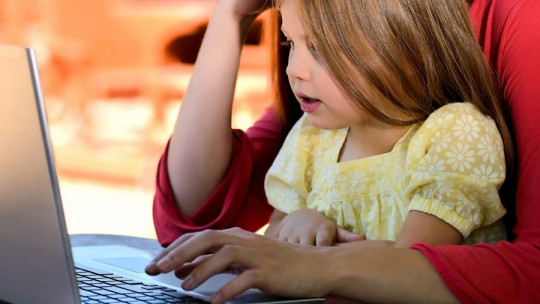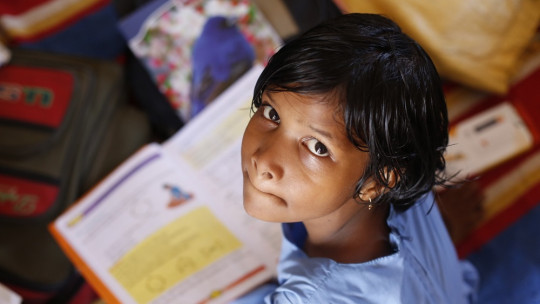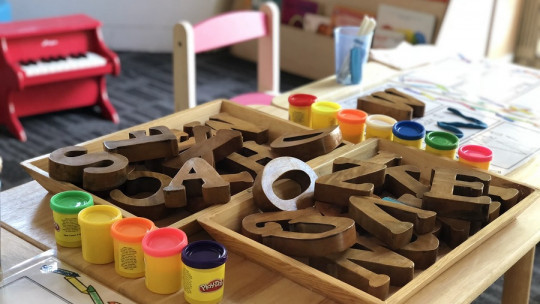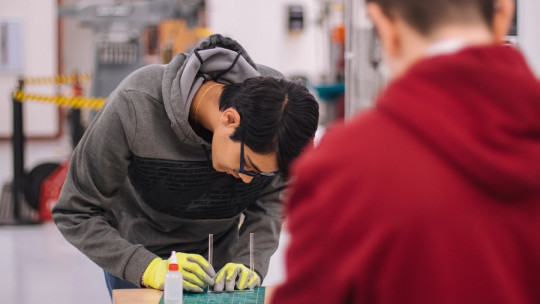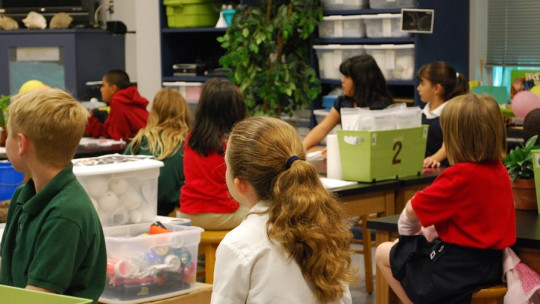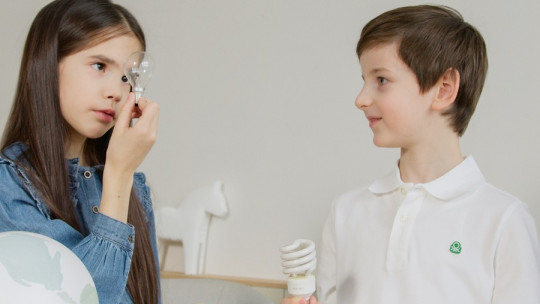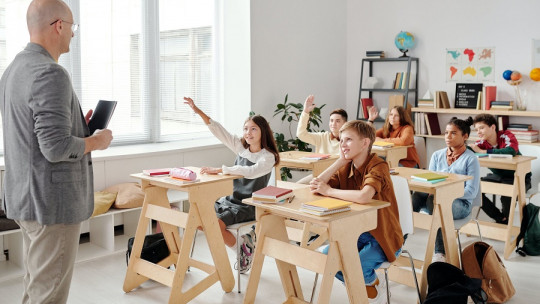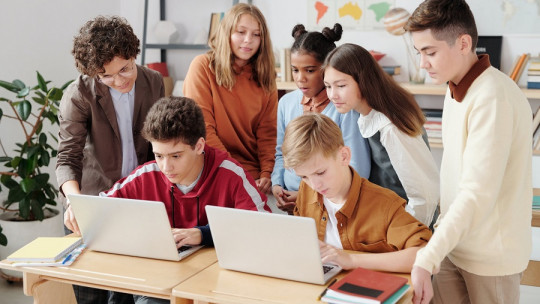
Learning environments can be understood as any type of environment in which a teaching-learning process takes place.
Although this definition is true, this term acquires a more specific meaning related to the world of education, referring to any scenario voluntarily built to promote learning.
Below we will delve deeper into what learning environments are what are its elements, what are the main types and what aspects must be taken into consideration when they are made.
What are learning environments?
In its most generic sense, learning environments are all the scenarios where the teaching-learning process takes place
These spaces are built with the purpose of creating an adequate environment so that students can establish an ideal relationship between themselves and the teacher, being developed to intentionally favor learning situations by actively organizing the teaching resources, time and interactions that occur in they.
In recent years, the care and planning of learning environments has been gaining importance based on new pedagogical postulates, motivated by the belief that it is necessary to promote the active participation of the student and the commitment of the educator. Achieving a good learning environment It will be guaranteed that the contents taught are acquired efficiently, comfortably and promoting meaningful learning
Elements of learning environments
In any educational environment of this type we can highlight at least four elements: interaction, information, production and exhibition.
1. Interaction
In a good learning environment, a relationship of trust between students and teachers with student-student relationships as well as teacher-student.
2. Information
The information refers to the content that the students are expected to acquire It also covers the instructions that teachers give to their students so that they can learn more efficiently and, to the extent possible, autonomously.
3. Production
The term production refers to the product that each student produces after having acquired knowledge and experiences. This is proof of how efficient the learning environment has been facilitating the acquisition of knowledge both in the classroom and in any other environment where the teaching-learning activity has been carried out.
4. Exhibition
We can understand the exhibition as any time a school gives students time to demonstrate what they have learned and how deep the learning has been.

Types of learning environments
As we have mentioned before, any environment that has been specifically designed for learners to acquire knowledge in a meaningful way can be understood as learning environments. However, These environments can be grouped into four typologies according to the degree of presence (physical or virtual) and the degree of formality (formal or informal)
1. Physical
It is about the physical environment that surrounds the students, mostly the school classroom. They are usually fixed spaces where students and the teacher interact with each other for a few hours
In physical learning environments are the resources that the school and teachers must adapt to ensure that students learn in the most efficient way.
2. Virtual
Virtual environments are any digital environment in which some learning process takes place. It is a telematic way of teaching that can be done through computers, tablets or mobile phones and any other electronic device
These types of environments have the advantage that physical presence is not necessary to acquire knowledge, and this means that they are educational environments that favor autonomous learning.
3. Formal
Formal learning environments They are those that have been developed by institutionalized and structured educational systems, applied in schools, institutes, universities and any other regulated educational center
These educational environments respect the regulations agreed upon by the country’s educational bodies, mostly ministries of education, organizations that establish the contents for each educational stage, from preschool/kindergartens to university education.
- You may be interested: “Formal communication: what it is and what its characteristics are”
4. Informal
Informal learning environments are environments where the individual acquires knowledge without the support of a teacher or a curriculum. These types of environments are the ones we are most often exposed to being our home, a museum, a zoo, a conference or the street itself, and they teach us useful knowledge for our daily lives.
Aspects to take into account in your planning
Below we are going to see a series of aspects to take into account when trying to create a learning environment.
1. In-depth knowledge of the students
The teacher takes on an important role in learning environments, especially formal ones.
As a mediator, you must know your students to know what direction your classes should take, since each of his pupils has his own abilities, expectations, desires and interests. The teacher must have deep knowledge about his students to work with them, not against them.
2. Spatial organization
The space is a very important aspect to take into account if you want to create an adequate learning environment
If it takes place in a classroom, it must be large enough, well lit with natural light and have good ventilation. It should be a place that invites study and calm. A welcoming place is a place that invites you to learn.
3. Educational materials
In a formal environment it is essential to plan what contents are going to be taught throughout the course It is also necessary to anticipate what materials will be required, such as microscopes, sporting goods, paints, sheets of paper, musical instruments…
4. Diversification of content
The diversification of content is essential to facilitate the learning process. The teacher must resort to alternative strategies, using auxiliary materials attractive to the students Activities that invite relaxation and fun can be introduced, such as making models, group work, preparing a conference…
Good planning not only focuses on appropriate teaching resources, but also involves the daily life and social reality of the students to make the knowledge they are going to acquire useful and practical, allowing students to recognize its importance.
- Related article: “Curriculum theory: what it is, characteristics, and historical development”
Importance of a good learning environment
Good learning environments awaken students’ interest in learning, since it makes them perceive the teaching-learning process not as a mere academic obligation but as a fun, motivating phenomenon that invites them to learn more. This makes learning relevant and meaningful, associating it with pleasure and positive emotions that will contribute to the long-term preservation of the learned content.
If in the educational environment the student feels respected as an individual, being treated as a person whose point of view deserves to be respected and heard and is allowed to ask questions without fear of feeling judged, the involvement in the educational process is even greater. In environments where boys and girls are free to ask questions and give free rein to their assertiveness, they learn more and better
This is not easy, since to achieve it requires highly qualified, motivated and vocational teachers, teachers who are willing to make the effort to observe, analyze and put into practice various pedagogical methods. If this is achieved, the teaching-learning processes will be fluid, students will carry out meaningful learning while taking learning as a fun and interesting activity.

